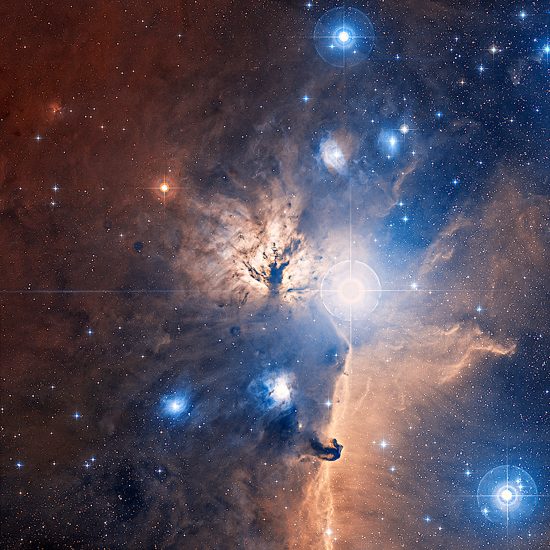
November 17, 2020
When science journals discuss the behavior of planetary nebulae, the typical opinion involves gas and dust “blowing” through them.
In many cases, a nebula is described as “star forming” when intense X-ray radiation, or extreme ultraviolet light, indicate to astronomers that nuclear fusion is occurring within the cloud. In an Electric Universe, plasma, not hot gas, flows through space. The physics of electricity applies, not the physics of wind. Planetary nebula are home to one or more plasma sheaths, or “double layers”, that act like capacitors, alternately storing and releasing electrical energy. The current flow alternately increases and decreases within the sheaths inside and outside the shell. No fusion phenomena need apply.
Charged particles in motion constitute an electric current. An electric current is accompanied by a magnetic field that wraps around the current and diminishes with the distance from it. The magnetic field gets stronger when more charged particles move in the same direction or when they move faster. Ions moving through the magnetic field are squeezed toward the axis. Plasma physicists refer to this as the “Bennett pinch.”
Plasma behavior is unfamiliar in many ways. It is often difficult to discern that plasma is completely different from a gas. Plasma’s similarities to gas are overshadowed by its failure to correspond with gas kinetics. Since more than 90% of the light frequencies from planetary nebulae are in the ionized oxygen range, they should be thought of as oxygen discharge tubes and not balls of gas.
An electric discharge in a plasma cloud creates a double layer along its axis. Positive charge builds up on one side and negative charge on the other. A strong electric field exists between the sides and if enough current is applied the double layer glows, otherwise it is invisible and is described as a “dark mode” plasma.
Double layers and current filaments also respond to the interstellar electric currents in the circuit that threads through the galaxy. They are mostly dark mode phenomena because of their low current density, but the magnetic fields they produce are apparent and detectable in the z-pinch (Bennett pinch) zones that arise.
A neon lamp that emits light only at the excitation frequency of a specific gas is a more correct model for nebulae. Electricity passing through neon gas causes it to form a plasma and to glow a pale yellow. Other gases, such as oxygen or hydrogen, produce blue and red light, while heavier elements emit their own colors.
Ideas like this are unfamiliar to astronomers who think in absolute terms of gravity and mass—they seldom think about electric charge. They think of moving charges from the Sun as a “solar wind” instead of an electric current. They think of charged particles impacting a planet or moon as a “rain” instead of an electrical discharge. They think of charged particles moving along a magnetic field as a “jet” instead of a field-aligned Birkeland current. They think of abrupt changes in the density and speed of charged particles as a “shock wave” instead of a double layer that can even explode.
It is about time that the simple more straightforward explanations are remembered and not the arcane, overly complex hyperbole that seems to be the standard for scientific papers today.
Stephen Smith
The Thunderbolts Picture of the Day is provided through the generous support of the Mainwaring Archive Foundation.












